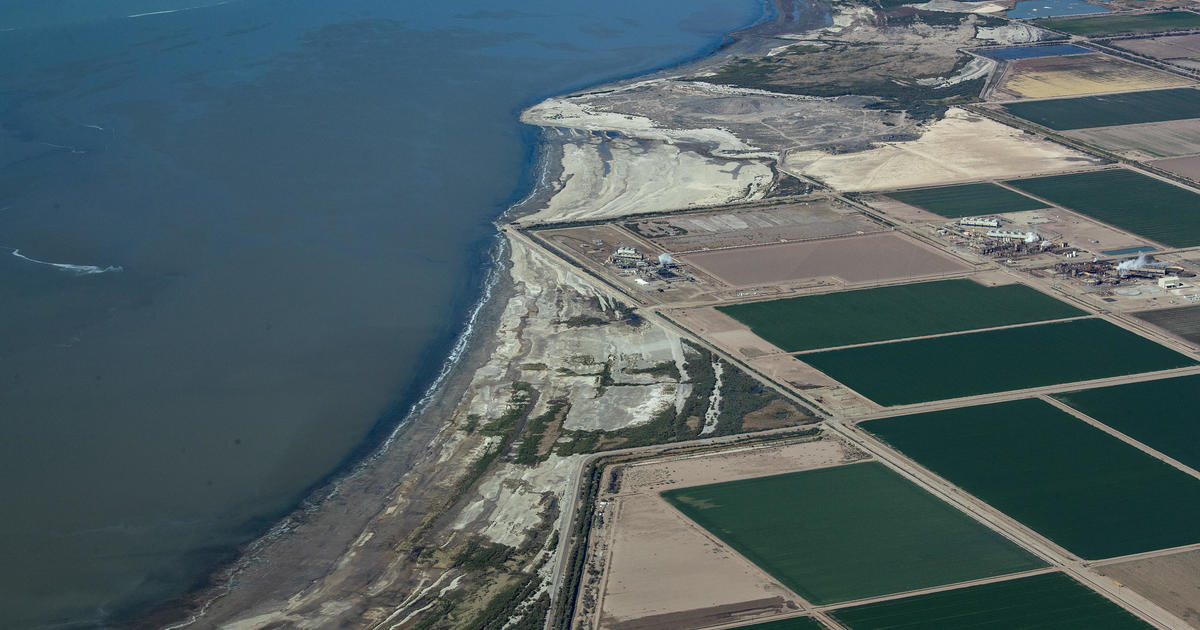Salton City, California — Damien Lopez, age 4, has symptoms that many people who live near Southern California’s Salton Sea also have.
“His cough gets very wheezy. I try to control him,” his mother Michelle Lopez said.
“Control” often means visiting pediatric nurse Christina Galindo at Pioneers Memorial Hospital.
“I can see up to 25 to 30 patients a day, and maybe half of those are dealing with respiratory issues,” Galindo told CBS News.
A 2019 University of Southern California study published in the International Journal of Environmental Research and Public Health found that between 20% and 22% of children in the region have asthma-like symptoms, a little more than triple the national rate for asthma, according to numbers from the U.S. Centers for Disease Control and Prevention.
Dr. David Lo, a professor of biomedical sciences at the University of California, Riverside, led a university study last year that determined the Salton Sea itself is responsible for the high incidence of asthma for those who live near it. It found that the contaminants in the sea could be causing lung inflammation in surrounding residents.
The Salton Sea was formed in the early 1900s after a dam broke and flooded the Imperial Valley with water from the Colorado River. Today, its primary source is nearby farm runoff, which includes fertilizer, heavy metals and toxins like arsenic and selenium, Lo explained to CBS News.
Brian van der Brug / Los Angeles Times via Getty Images
For decades, this dangerous mix sat on the sea floor. But without the replenishment of Colorado River water, the Salton Sea is rapidly receding, exposing a dry and toxic lakebed to the wind.
It is also attracting a new industry looking to mine another chemical that lies below the lakebed — lithium.
“If California wants to electrify every single vehicle by 2035, they’re gonna need every piece of lithium they can get,” said Frank Ruiz, director of the Salton Sea program for California Audubon and a board member for the Lithium Valley Commission, a California state agency which oversees lithium mining in the region.
“We don’t completely understand the impact of the lithium industry,” Ruiz said. “No industry is 100% free of environmental impacts.”
Ruiz says lithium could be liquid gold for a region facing some of the highest poverty rates in the state. For now, it’s unclear if lithium is a lifeline or a threat.
“This is a toxic, toxic dust,” Ruiz said, adding that he hopes the community around the Salton Sea doesn’t pay a health cost for what could be an economic boon.
“Taxes and revenues can potentially provide money to continue covering this toxic playa,” Ruiz said.
Lopez hopes her family is not left in the dust.
“”Some concern that one day they’ll be like, ‘You have to leave your house, because you can’t live in here any more,” Lopez said.



